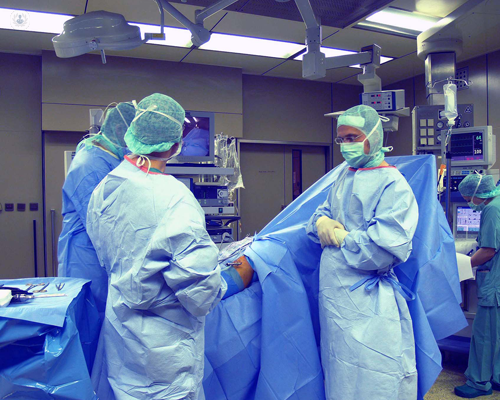A guide to meniscal tears and their surgical treatment
Autore:A meniscal tear is a very common knee injury, especially for people who play sports. Mr Hersh Deo MSc. FRCS (Tr&Orth), consultant orthopaedic surgeon, provides a detailed guide to this condition, how it occurs and treatment.

What is the meniscus?
The menisci are a pair of c-shaped pieces of specialised cartilage which sit on top of the shin bone (tibia). They act as shock absorbers and spread the load of the body weight, protecting the articular cartilage (the gliding cartilage that covers the bone ends).
If the meniscus is removed, it will lead to increased wear of the articular cartilage which leads to osteoarthritis and ultimately a partial or total knee replacement. This is why my ethos is to always save the meniscus whenever possible.
How is the meniscus torn?
The knee is the most commonly injured joint in football or rugby and a meniscal tear is the most common knee injury. The menisci are torn when the knee is slightly flexed, loaded and twisted. (For example – changing direction quickly whilst running also known as “cutting”)
Do all tears need surgery?
There are many types of tear that can result from a twisting injury. Some tears will heal themselves. Tears around the outside of the knee (near the capsule) have a better chance to heal as the blood supply is better in this region. Often, minor tears of the inner edge will not require surgery.
What is the treatment for a meniscal tear?
A knee arthroscopy is keyhole surgery. It is a day case procedure done under a general anaesthetic involving two one-centimetre incisions either side of the knee cap. The procedure time is usually 30 minutes. At arthroscopy, I will decide if the meniscus is repairable. If not, I will trim and contour the tear to a stable rim, leaving as much meniscus as possible. I will always repair the meniscus if I can. This gives the best long-term outcome for the knee.
How is it done?
The meniscus is repaired using internal stitches which are used to compress the tear using a meniscal repair system. This can be done through the original keyholes (all inside technique) or via additional key holes (outside-in technique).
Are meniscal repairs safe and effective?
Yes. Repairing the meniscus is the best way to prevent osteoarthritis in the future. The operation is successful in approximately 90% of cases, as long as the post-operative rehab is done properly. I will issue you with a brace to protect the repair for four to six weeks. Return to sport is normally three to four months.
Are these procedures going ahead during the pandemic?
Yes. Spire Norwich Hospital and James Paget University Hospital (JPUH) has a dedicated ‘green’ pathway (COVID free). You will be asked to self-isolate and take a COVID test before the operation.
Are you looking for advice regarding knee injuries? Mr Hersh Deo is here to help and you can find his Top Doctors profile here.
For further information, please visit: www.deo-orthopaedics.co.uk or phone Gill on 01493 452312


